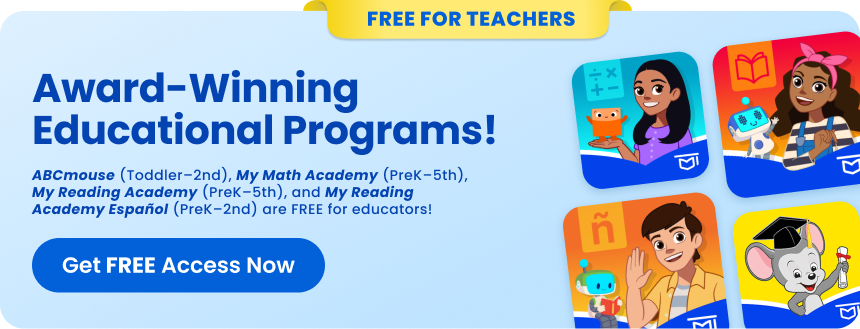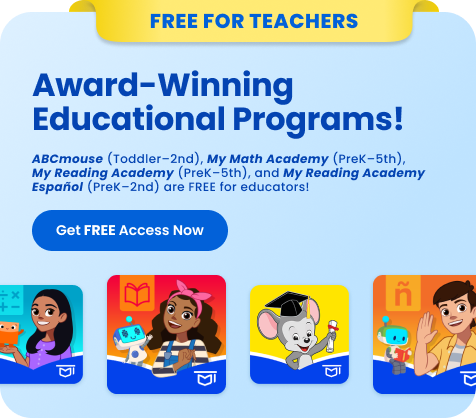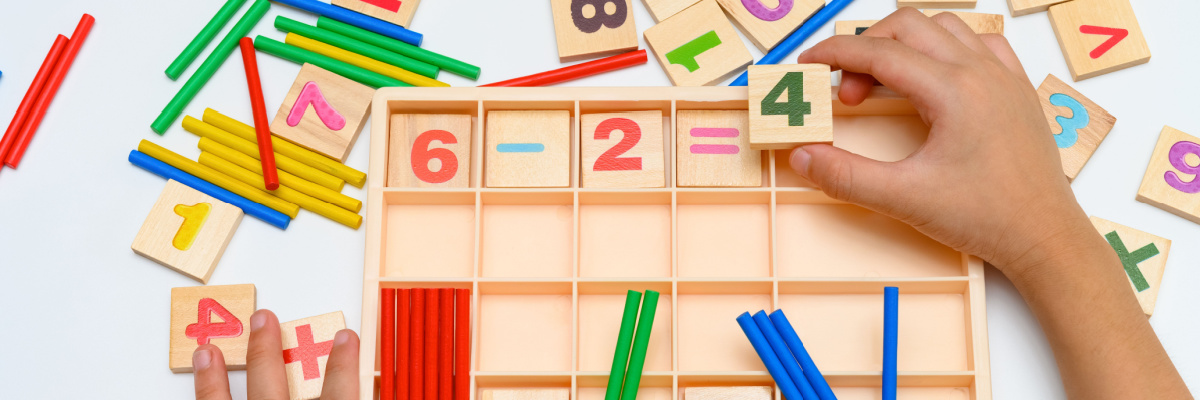
How to Teach Subtraction – Easy Strategies for Parents and Teachers
Get strategies for teaching your child subtraction and a few tips and tricks to help make learning more effective and enjoyable.
Teaching kids how to subtract is like unlocking a new level in the game of numbers. However, figuring out the best way to teach kids subtraction can sometimes feel overwhelming. It requires patience, the right approach, and adding in some fun!
This guide aims to help you teach your child basic subtraction and includes an overview of the parts of a subtraction problem, subtraction strategies you can use with your child, how to approach subtraction facts, and more. Whether you’re a teacher or a parent, we hope you’ll find a few helpful tips and fun tricks for teaching subtraction to your young child.

An Overview of Subtraction by Early Grade Levels
When hearing the word subtraction, many people immediately think it simply means how many items remain after removing some. While subtraction typically starts with this foundational concept, it grows more complex as children get older and you’ll find subtraction goes beyond the concrete level of just taking away or removing items.
In kindergarten, children will focus on understanding what subtraction means with situations that are very straightforward.
An example of a kindergarten-level subtraction problem might look like this:
There were 5 frogs. 2 frogs hopped away. How many frogs are left?
As students move on to first and second grade, the situations involving subtraction are expanded and become more complex. For instance, comparing two quantities of objects and telling how many more or fewer involves subtraction by finding the difference, a process that is more abstract than just taking away or removing concrete objects.
An example of a first- or second-grade subtraction concept is knowing the total number of objects and needing to find a missing part. This involves subtraction but is not necessarily focused on taking away.
Sarah has 18 apples. 6 of her apples are green while the rest of her apples are red. How many red apples does Sarah have?
Why Are Subtraction Facts Important?
While at one time rote memorization of subtraction facts was a regular part of learning subtraction (think flashcards), this approach can sometimes cause children to feel extra pressure and typically eliminates the benefits of visual aids. Memorization also removes more meaningful understanding that can come from solving math problems in contextualized situations.
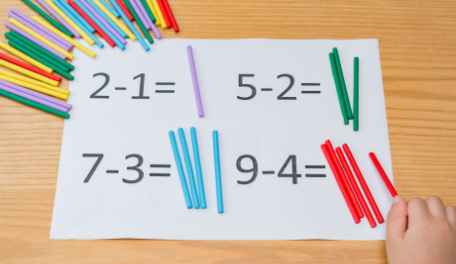
However, practicing subtraction facts, such as 5 – 3, after establishing a baseline of understanding can lead to recalling math facts more efficiently, helping children to prepare for learning new math concepts.
What are Subtraction Facts?
Subtraction facts include all the differences that children can find between numbers. Here are some tips to keep in mind when choosing subtraction facts to work on with your child:
For children in second grade and below:
- The first number in the equations (the minuend) should be less than 20.
- The second number in the equation (the subtrahend) should be a one-digit number.
- The answer to the subtraction equation, or the difference between the two numbers, should also be a one-digit number.
The numbers used in subtraction equations will vary by grade, with kindergarteners and first graders becoming fluent in facts through 10 and second graders learning facts through 20.
When to Start Learning Subtraction Facts
Children typically begin learning the framework for subtraction in kindergarten, first learning to count backward and then moving on to subtracting with visual aids that can be physically “taken away” from a larger group of objects.
For example, a kindergartener might be given three blue squares, and then be asked to remove one of those blue squares and count how many blue squares are left.
However, kindergarteners are still developing a baseline understanding of numbers, counting, addition, and subtraction. First grade is an ideal time to dig into teaching subtraction facts, as children this age have typically developed stronger number sense skills and are prepared to solve more complex and challenging subtraction problems.
What Kids Should Know Before Learning Subtraction Facts
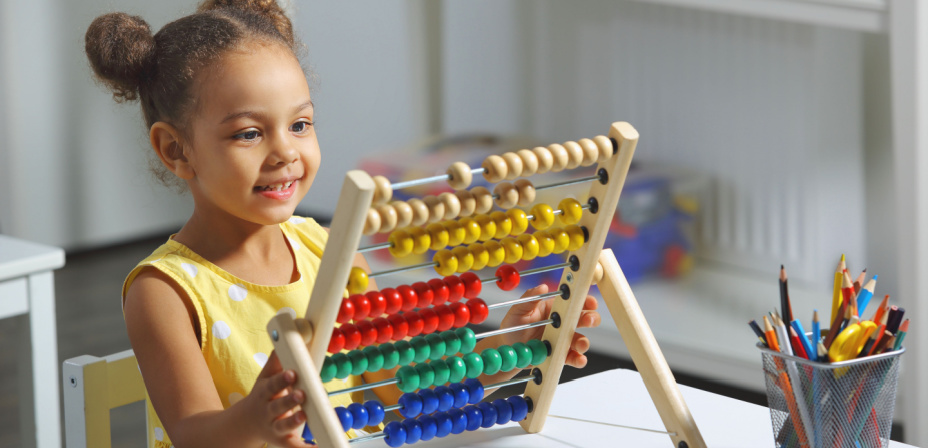
Before learning subtraction, it’s beneficial for children to have a good grasp of counting and number recognition as well as repeated experiences using concrete objects or visual aids to explore numbers.
Tip: Spend time with your child counting toy trucks and practicing number recognition and cardinality before teaching them subtraction.
Knowing the concept of “less than” is also crucial since subtraction involves finding one or more less than another number or the difference between two numbers. It’s helpful if your child understands that a number that is one less is just the number that comes right before it in the counting sequence.
Tip: Work on making the connection that when you subtract, you will have fewer items than when you started.
Having a strong understanding of addition can also be helpful in learning subtraction. For instance, if a child understands that having three apples and receiving four more results in a total of seven, it will be easier to comprehend that giving away four apples from a total of seven leaves them with three.
Tip: Engaging and entertaining lessons and activities can make learning these foundational skills enjoyable and prepare children for further exploration of subtraction. Check out our posts on hands-on math activities for preschoolers through second graders.
Strategies for Teaching Subtraction
Subtraction tends to be a more challenging skill to learn than addition, so making it an enjoyable process to learn is key. Here’s a step-by-step guide to help you get started.
Step 1: Keep It Simple
Begin with less complex subtraction tasks and focus on more concrete situations. Try these ideas:
Try these ideas:
- Use objects, like toys or food, when counting forwards or backward or when exploring the idea of “taking away” or “one less.”
- Start with the idea of one or two less than a number. Don’t move on until your child has a solid understanding of taking away one or two from a number.
- Focus on situations that can easily be acted out or demonstrated, such as “taking away” rather than “finding the difference.”
Step 2: Visualize Numbers and Use Strategies
When first teaching subtraction, help kids see subtraction in action. Encourage them to use objects, drawings, or fingers to demonstrate what happens when we take numbers away.
As children get older, they’ll explore more complex subtraction problems without concrete objects in front of them, so they’ll need to work on visualizing the numbers in their mind. Introduce strategies that can promote comprehension rather than just memorization.
The ABCmouse Preschool Math Curriculum provides engaging, interactive lessons that help preschoolers build a strong foundation in number sense, counting, and early subtraction through fun, hands-on activities.
Try these ideas:
- Count backward with your children as you’re running errands.
- If you see a number, ask your child to think of the number that comes just before it.
- Use a game board and create a game where your child has to start at the end and reach the beginning by counting backward as they go.
- Work on subitizing, (the ability to instantly recognize the number of objects in a group without having to count them) especially whole amounts broken into two distinct groups. For example, have your child roll two dice and try recognizing the total amount they see.
Tip: Subitizing helps children learn to quickly compose and decompose numbers and more clearly understand the inverse relationship between addition and subtraction.
Step 3: Practice
Consistent practice is essential for mastering any new skill. Don’t focus on having your child memorize subtraction facts. Instead, utilize games, everyday experiences, and worksheets to help make practicing fun. If students can quickly recall some subtraction facts, they might be able to use those facts to quickly figure out other subtraction facts. Thus, memorizing every single fact is actually not essential to mastering subtraction.
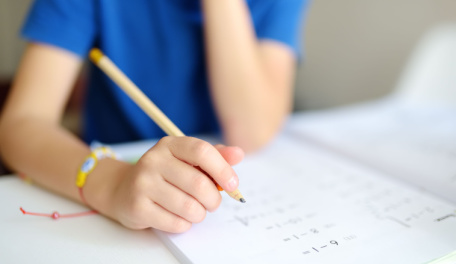
Step 4: Offer Variety and Discussion
Present children with different numbers and scenarios when exploring subtraction, and keep talking about what strategies they’re using to solve the different subtraction scenarios you’re presenting.
Tip: If your child gets stuck, slow down the pace, revisit numbers they know, and talk through different ways to solve the subtraction problem they’re struggling with.
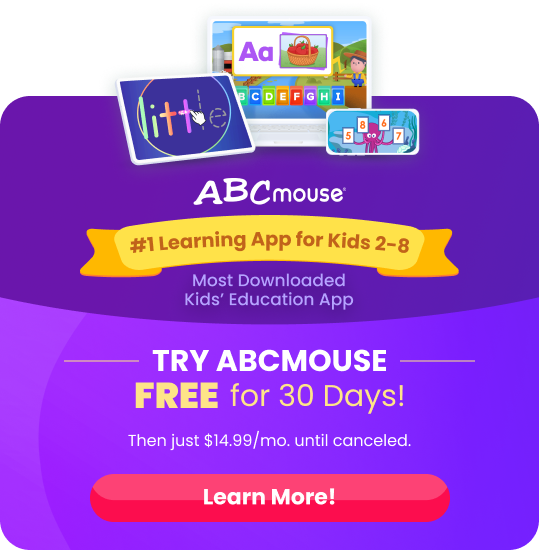
Focus on Understanding, Not Memorization
Don’t rely on memorization and drills when teaching children about subtraction. While memorizing facts is helpful, it’s essential to help children understand the reasoning behind subtraction. Using visual aids or concrete objects that children can physically count can help reinforce understanding.
Having a strong understanding of what subtraction means and how it can be used in a variety of different situations (i.e. take away/separate, comparing/finding the difference) is more important than memorizing facts.
Understanding the concepts behind different subtraction scenarios teaches students to be problem solvers and provides them with a variety of strategies to use when they’re stuck.
Helpful Resources and Tools
ABCmouse Educational Math Games
ABCmouse offers a variety of interactive games designed to make learning subtraction feel like play, helping kids learn subtraction concepts in a fun and effective way.
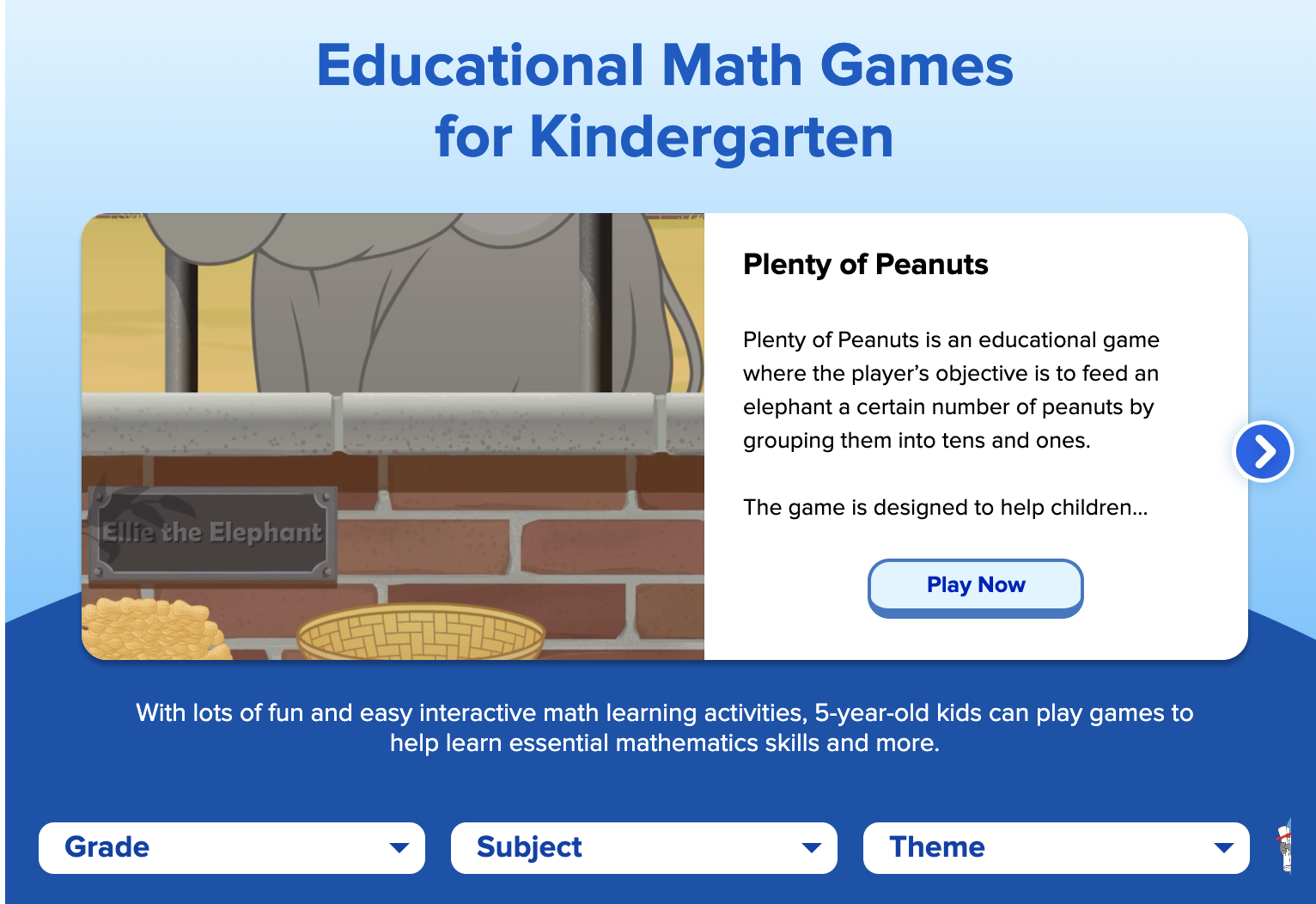
Subtraction Action Books and Songs
Counting books, songs, and rhymes can be powerful and engaging tools. For example, try the book and rhyme 10 Little Monkeys Jumping on the Bed or Subtraction Action by Loreen Leedy, which brings subtraction to life with vibrant illustrations.
When reading other books, point out moments when one less item or character is seen or mentioned on the pages. This can help to promote the understanding of one less and the idea that it’s just the number right before in the counting sequence.
Interactive Worksheets
Subtraction can be a fun and engaging activity when presented as interactive worksheets. These worksheets provide ample practice opportunities and allow kids to apply what they’ve learned in different contexts, which enhances their understanding and mastery of subtraction. If your child needs to review their addition facts, check out the ABCmouse addition worksheets for kindergarteners.
Teaching subtraction involves more than just numbers; it opens doors to new worlds in mathematics. It’s not just about taking away–it’s about understanding the relationships between numbers, recognizing patterns, and solving problems.

Additional Resources
ABCmouse offers engaging programs and games designed by early education experts to help expand your child’s learning. Here are a few examples:
Important Math Concepts for First Graders
Learn some key areas to focus on with your child as they explore the world of math as a first grader.
Browse →
Use Cards to Teach Kindergarteners Math
See how everyday playing cards can be a great resource to help your child practice key math concepts.
Browse →
Hands-on Math Activities for Your Second Grader
Practicing math skills gets even more fun with these engaging math activities.
Browse →
ABCmouse’s expert advice review process:
Our team of ABCmouse Curriculum Experts, made up of talented professionals in early childhood education and development, take a close look at educational content and learning claims. They put in the effort to make sure our information is accurate and current. We have a certified educator or another respected authority review the content, matching their expertise with the topic at hand. They’ll make sure the content is thorough and follows the latest research and educational guidelines. If they think we can make things even better, they’ll chat with our editorial team, and we’ll make those improvements right away. Only after a reviewer gives their thumbs-up does a piece of content get the official stamp of approval in the byline.

